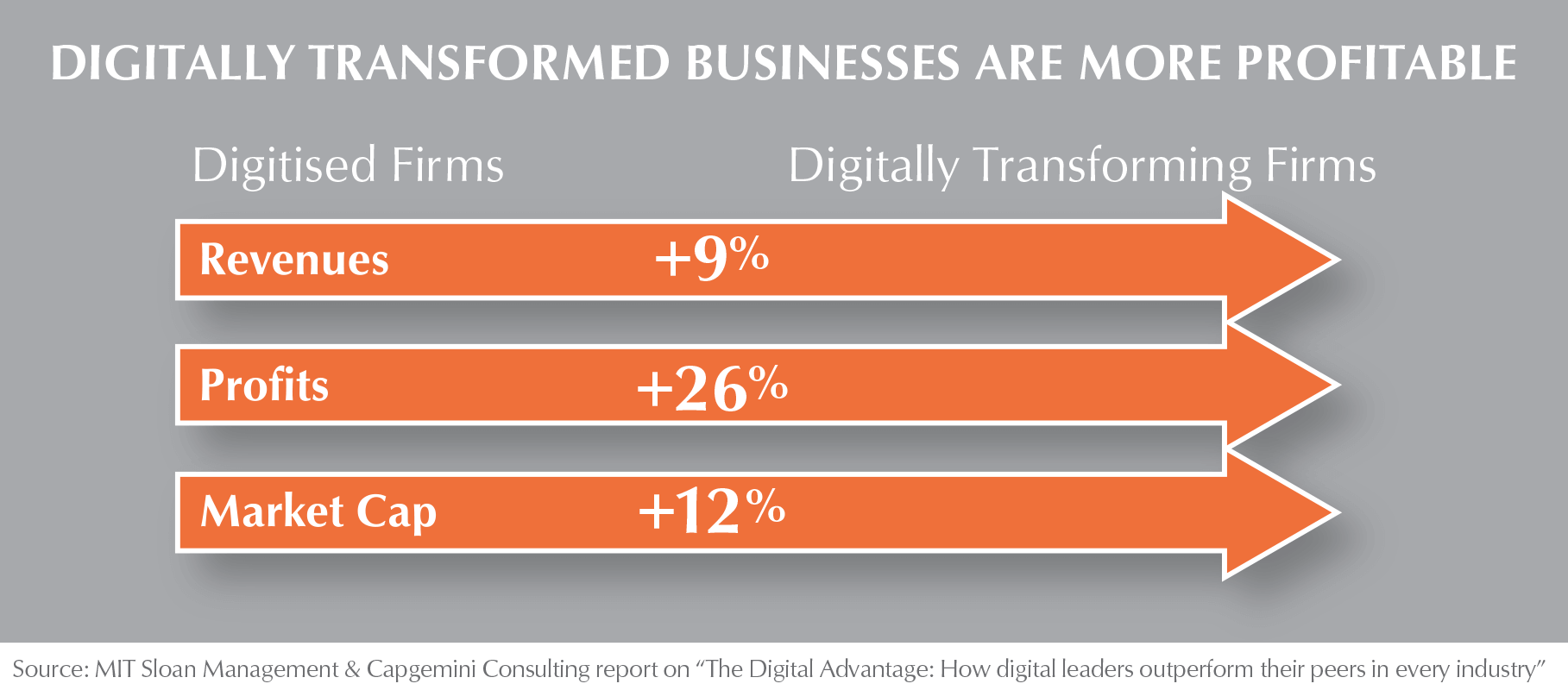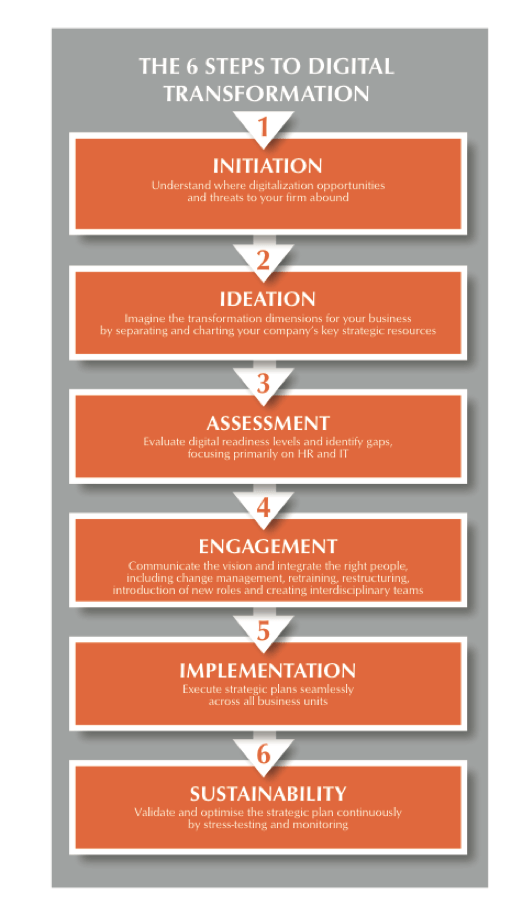
In today’s business environment, where the only constants are change and complexity, the most successful companies solidify their position by designing highly malleable processes to capacitate the digital transformation of multiple business dimensions. Doing so has the potential to create a more effective business model. Customer experience (through digitally enabled products and services), operations (through processes and decision-making) and employee skills can all be improved.
The mere application of digital technologies does not suffice to maintain market competitiveness and does not constitute digital transformation.
Digitisation versus Digital Transformation
To understand the difference between digitisation and digital transformation, look at the differences between GE and Amazon. GE had market-leading processes, and when they became available, applied new, market-leading technologies to existing practices. In other words, they computerised manual processes for increased efficiency. Paper forms became electronic forms, sales transaction logs and invoices were transferred to salesforce and ERP systems. This is digitisation – the underlying practices typically remain the same, and the analogue-to-digital process introduces the computerisation of tasks.
Amazon, on the other hand, undergoes digital transformation every six months. The transformation component embodies the ability to change actual processes and competencies – Amazon does not engage in one-time digitisation. Instead, they have malleable processes that are designed to intrinsically and substantively enable the company to change so that it can adapt to the market and grow when the opportunity presents itself. The best example of this is its product-to-platform transformation: from a digital re-seller of products to the platform company we know today, open to third-party contributions, so users have the license to build on top of its data layers.
Digital Transformation can Increase Profit

Capacitating Digital Transformation
A company should first create organisational awareness around its internal and external contexts:
➢ Internal – Affecting business operations, decision-making and organisational structures.
Firms should design processes that enable them to capitalise on growth opportunities as they present themselves. The most significant obstacles to successful internal digital transformation are the perception that it’s not urgent, entrenched employee attitudes and innovation fatigue.
➢ External – Affecting customer experience.
Businesses should focus on enhancing customer experience with technology and enabling new value creation by re-thinking the scope of their business. Also, new revenue streams from digitally enhanced products, services and customer interactions should be identified.
Digital transformation is a complex undertaking so it helps if its implementation can be simplified. The following six-steps will enable firms to create the right processes, allowing them to analyse digitised data better and integrate digitalised applications. This, in turn, can facilitate the creation of new business and revenue models.
-
Initiation: Understand the digitalisation opportunities and threats to your firm.
➢ A readiness assessment can be undertaken to identify new opportunities as well as internal problems, vulnerabilities, and their associated risks.
-
Ideation: Imagine the shape digital transformation might take by charting your company’s key strategic resources.
➢ Map exercises to determine the processes and outcomes that will be affected.
-
Assessment: Evaluate the level of digital readiness and identify gaps, focusing primarily on HR and IT.
➢ Introduce new data sources into your organisation’s decision-making processes, enabling predictive capabilities while obtaining actionable insights from analytics to leverage your data. This will optimise digitally enabled supply chains and customer interactions.
-
Engagement: Communicate vision and integrate the right people by changing management, retraining staff and creating new roles and interdisciplinary teams.
➢ Questioning the validity of conventional value chains is essential. For instance, functional units such as production, logistics, sales, finance and IT should be separated. The transformation component of the process should permeate every corner of your business and involve all personnel eliminating any siloing.
-
Implementation: Execute strategic plans seamlessly across all business units.
➢ For companies with mostly physical products and fewer customer requirements, focusing on operations is critical. Asset light companies, on the other hand, should focus on customer value proposition.
-
Sustainability: Validate and optimise the strategic plan by stress-testing and monitoring.
➢ Add new flexible work streams, along with bottom-up innovation processes to drive the ongoing digital evolution.

In conclusion, internal processes and the culture that supports company strategy must be designed with flexibility in mind so they can be substantively changed when the need arises. As digitised technologies create new opportunities, industry-changing business models can be utilised. Put simply, those companies that have digitally transformed successfully are far better at changing their business models.
It’s equally important to consider your workforce. Any strategic shift will impact the lifeblood of your company: the people. Digital transformation projects must be strategy-driven, rather than technology-led, lest firms develop processes or invest in technology that no-one will use.









